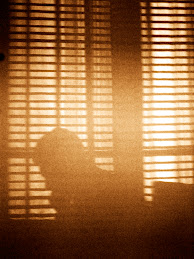



Since the 1970s the "two-man collective" of Vitaly Komar and Alexander Melamid have used their paintings, installations, and performances to debate, negotiate, and critique the process by which governments and other power elites manipulate both history and art history in their efforts to achieve specific ideological goals. In these works, they examine the central role images play in bolstering and validating systems of belief and power, and they interrogate the continual recycling and re-inventing of political, social, and artistic traditions, which are consequently revealed to be depleted of any authentic meaning. While they have identified the historical continuity of particular tropes of representation, they recognize the paradoxical process by which seemingly fixed categories such as nation and truth shift over time. Their work is also fundamentally rooted in a playful sense of irony apparent since their earliest efforts, in which they mocked the pretensions of official Soviet art to debunk the ideologies the works were meant to embody and promote.
Komar and Melamid actively deconstruct historical and art historical categories by mining and combining sources across temporal and geographical boundaries. The resulting pastiche of apparently disparate styles, images, and cultures reveals the fluid nature of the canonic narratives of history and art history, as they shift in response to the political, social, economic, and cultural agendas of various regimes. Their dialogic process invites the viewer's active consideration of these narratives, which, in combination with the artists' biting parodies of their original sources, results in art that is both thought-provoking and entertaining. Indeed, Komar summarized the essence of their art praxis: "I like this notion: art as entertainment that poses questions."
In the early 1970s Komar and Melamid founded a mode of conceptual Pop art in the Soviet Union known as Sots-Art [akin to Pop Art, but using the visual language of Socialist rather than capitalist mass culture--RJS]. They and other Soviet nonconformist artists produced work that challenged the rigid dictates of the official style of Socialist Realism. While many of their contemporaries actively rejected direct references to official art, K&M chose to appropriate stock images and texts from high and low culture. Through works in various media and styles, they emphasized the repetitive and kitschy nature of their sources, underscoring the ironic condition of Soviet visual culture. These images and texts had become bankrupt tools of propaganda while remaining part of a shared social language as legible to Soviet audiences as Andy Warhol's soup cans were to U.S. viewers.
Valerie Hillings
Source: The Post-Utopian Art of Vitaly Komar & Aleksandr Melamid(Sots Art: 1970s, '80s)
See further: Komar and Melamid's Dialogue with History - Art




Aucun commentaire:
Enregistrer un commentaire